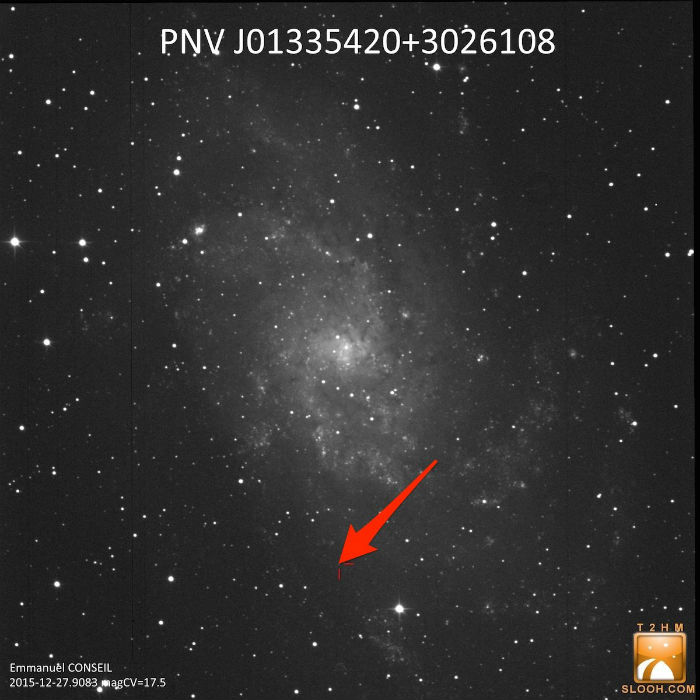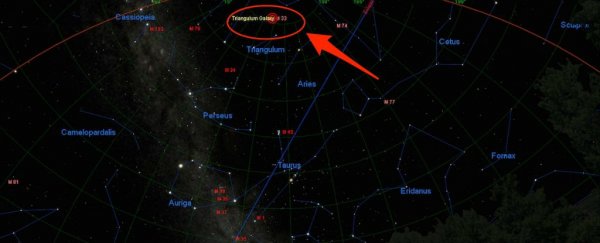Although no three kings were present at the time, amateur astronomer Emmanuel Conseil discovered a 'new star' or nova in the Triangulum Galaxy on Christmas Day.
He made the discovery using the online Slooh observatory, whose telescopes are located in the Canary Islands. It was the second time Conseil had discovered a nova this way.
Slooh did a live broadcast of the galaxy and its 'new star' on its webpage Tuesday afternoon, and will host a second show next week Tuesday at 2:30pm EST, when scientists will hopefully know what kind of nova it is. "The object was there on my images on Christmas Day, but not there on the 24th. It's pretty new!" Conseil said in a statement.
A nova, or new star, is basically a gigantic nuclear explosion that occurs when a white dwarf star steals material - mostly hydrogen - from its stellar neighbor. When it gathers enough material, it causes a runaway nuclear fusion reaction, which blasts the material out into space. The nova is usually visible for several months afterward.
Several other amateur astronomers corroborated Conseil's discovery using the Slooh telescopes.
The Triangulum Galaxy, where the nova was discovered, is a spiral galaxy - a flat, rotating disc of stars, gas, and dust with a central bulge of stars. At 2.7 million light-years away, it's the most distant object you can see with the naked eye, according to EarthSky. But you need unpolluted skies and good eyesight.
See above for a diagram of where the Triangulum Galaxy sits in the night sky. And here's an image of the galaxy with the 'new star', indicated by red arrows:
 Slooh Observatory
Slooh Observatory
This article was originally published by Business Insider.
More from Business Insider:
